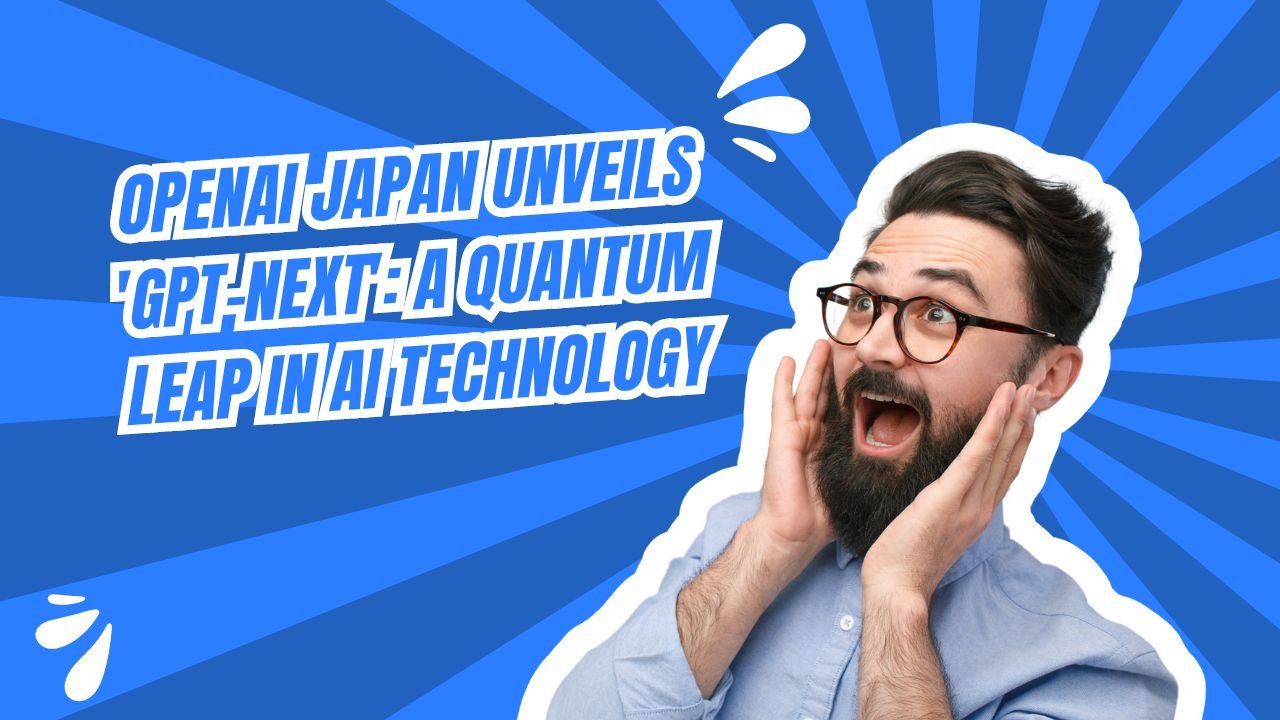OpenAI Japan’s president, Tadao Nagasaki, has revealed the imminent arrival of ‘GPT-Next’, an artificial intelligence model purported to be 100 times more powerful than its predecessor, GPT-4. This revelation comes as OpenAI strengthens its foothold in Asia with the inauguration of its first Tokyo office, marking a significant milestone in the company’s global expansion strategy.
A New Era of AI Capability
The announcement of GPT-Next represents more than just an incremental improvement in AI technology. With claims of being 100 times more potent than GPT-4, which itself was a landmark achievement in natural language processing, GPT-Next promises to redefine the boundaries of what’s possible in artificial intelligence.
While specific details about GPT-Next’s features and functionalities remain under wraps, the sheer scale of improvement suggested by Nagasaki hints at a transformative leap in AI capabilities. This could potentially revolutionize a wide array of industries that rely on AI technology, from healthcare and finance to education and creative arts.
OpenAI’s Asian Expansion
The unveiling of GPT-Next coincides with OpenAI’s strategic move to establish a presence in Japan, one of the world’s leading technological hubs. The new Tokyo office is set to become a nexus for collaboration with local businesses and government institutions, with the aim of developing AI tools tailored to Japan’s unique cultural and economic landscape.
“Our expansion into Japan is not just about bringing our technology to a new market,” Nagasaki stated. “It’s about fostering a collaborative ecosystem where we can work alongside Japanese innovators to create AI solutions that address specific local needs while contributing to global advancements in AI.”
Building on Recent Successes
The announcement of GPT-Next follows closely on the heels of OpenAI’s recent release of a custom GPT-4 model optimized for the Japanese language. This specialized model, which operates up to three times faster than its predecessor and offers enhanced performance in translation and text summarization, demonstrates OpenAI’s commitment to localization and performance optimization.
GPT-Next is expected to build upon these recent advancements, potentially offering even greater speed improvements and language-specific optimizations across a broader range of languages and applications.
Anticipated Improvements in GPT-Next
While details are scarce, industry experts speculate on several key areas where GPT-Next might showcase significant improvements:
- Enhanced Multimodal Capabilities: Building on GPT-4’s ability to process images and audio, GPT-Next is expected to offer more seamless integration of various data types, potentially including video and complex sensory inputs.
- Expanded Knowledge and Reasoning: With its vastly increased computational power, GPT-Next is likely to demonstrate more sophisticated reasoning capabilities and access to a broader knowledge base, enabling more nuanced and contextually appropriate responses.
- Improved Efficiency: Despite its increased power, GPT-Next is anticipated to be optimized for greater efficiency in terms of computational resources and energy consumption, making it more accessible for widespread deployment.
- Advanced Safety Features: OpenAI has consistently emphasized the importance of AI safety and alignment. GPT-Next is expected to incorporate cutting-edge safety measures, potentially including more robust ethical decision-making frameworks and improved ability to recognize and avoid harmful or biased outputs.
- Specialized Domain Expertise: The increased capacity of GPT-Next could allow for more in-depth specialization in specific fields, potentially offering expert-level insights across a wider range of disciplines.
Implications for the Future of AI
The announcement of GPT-Next has sparked intense discussion among AI researchers and industry leaders about the future trajectory of artificial intelligence development. If the claims of a 100-fold improvement over GPT-4 prove accurate, it could represent one of the most significant leaps in AI capability since the inception of large language models.
“We’re standing on the brink of a new era in artificial intelligence,” said Dr. Yuki Yamamoto, a leading AI researcher at the University of Tokyo. “If GPT-Next lives up to these claims, we may need to reassess our timelines for achieving artificial general intelligence. The potential applications and implications are staggering.”
Challenges and Concerns
However, the announcement has also reignited debates about the ethical implications of increasingly powerful AI systems. Critics argue that such rapid advancements may outpace our ability to implement necessary safeguards and regulations.
“While the potential benefits of GPT-Next are exciting, we must approach this development with caution,” warned Keiko Tanaka, head of Japan’s AI Ethics Committee. “We need to ensure that appropriate ethical guidelines and oversight mechanisms are in place before deploying such powerful AI systems.”
As the world eagerly awaits more details about GPT-Next, one thing is clear: the landscape of artificial intelligence is on the cusp of a dramatic transformation. With OpenAI’s latest announcement, the future of AI looks more exciting—and more complex—than ever before.

